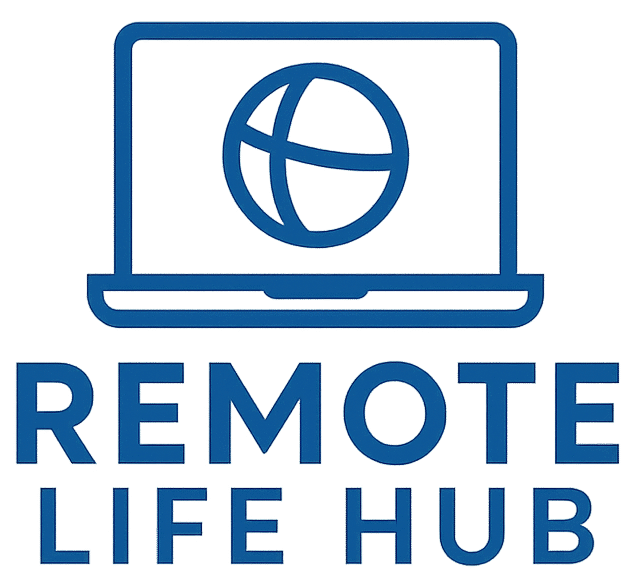What Is Remote Work and How It Actually Functions
Introduction: What Is Remote Work and Why It Matters
The phrase what is remote work represents one of the biggest transformations in how people earn and live. Instead of commuting daily to a traditional office, professionals today can complete their responsibilities from virtually anywhere — whether that’s a dedicated home office, a coworking space, or even a quiet corner of a café halfway around the world. Thanks to the internet and modern collaboration tools, remote work has moved from a niche perk to a mainstream practice. This article explores the meaning of remote work, how it functions daily, and why it’s becoming the preferred lifestyle for millions.
What Is Remote Work? Defining the Concept Clearly
In its simplest form, remote work refers to a professional setup where employees, freelancers, or entrepreneurs perform their job duties outside of a centralized office environment. The focus shifts from where work is done to how it’s done. People stay connected through digital tools — email, chat, and video conferencing — and collaborate across cities or even continents.
Remote work can take multiple forms:
- Fully remote: The employee or freelancer never reports to a physical office.
- Hybrid: A combination of remote and in-office days.
- Flexible or asynchronous: Workers choose when to complete tasks as long as deadlines and outcomes are met.
Regardless of format, remote work thrives on accountability, communication, and trust. It’s not just a location change — it’s a shift in mindset.
How Remote Work Functions Day to Day
Remote work runs on systems and discipline. The daily workflow includes structured communication, clear deliverables, and smart use of digital tools. Here’s how most remote professionals operate successfully:
- Stable Internet: Fast and reliable connectivity is the foundation of productivity. Many professionals keep a mobile hotspot as backup.
- Communication Tools: Slack, Microsoft Teams, and Zoom help replicate office interactions virtually.
- Project Management: Software like Notion, Asana, or Trello organizes tasks and keeps everyone aligned.
- Cloud Storage: Platforms like Google Drive or Dropbox make files accessible anytime, anywhere.
- Time Tracking: Apps such as Toggl or Clockify help professionals balance hours and measure progress.
These technologies allow work to flow smoothly without needing a physical office. For practical time-structure ideas, read How to Improve Time Management as a Remote Worker.
Benefits of Remote Work for Employees
The advantages of remote work go far beyond convenience. They shape better lifestyles, stronger focus, and healthier balance:
- Flexibility: Choose working hours that fit your natural rhythm and family life.
- Reduced Costs: Save on commuting, meals, and professional attire.
- Improved Well-Being: Fewer hours in traffic mean more time for rest and exercise.
- Global Opportunities: Work for companies anywhere without relocating.
When managed wisely, remote work boosts happiness and loyalty. To cultivate focus and consistency, see 10 Simple Habits of Successful Remote Professionals.
Benefits for Employers and Teams
Organizations also gain measurable advantages from adopting remote setups:
- Access to Talent: Recruit the best people regardless of geography.
- Lower Overhead: Smaller offices reduce rent and operational costs.
- Resilience: Distributed teams are more adaptable to disruptions.
- Diversity: Remote hiring brings varied perspectives and skills.
Well-managed distributed teams can be more efficient, innovative, and loyal than traditional office groups. The key is culture, not location.
Challenges of Remote Work — and How to Handle Them
Of course, even the best systems face challenges. Knowing them early helps maintain balance:
- Isolation: Working alone can reduce social connection. Join coworking spaces or online communities to stay engaged.
- Distractions: Home life can interrupt focus; establish clear working boundaries.
- Communication Gaps: Without nonverbal cues, clarity is essential. Use precise, friendly written communication.
- Overworking: Without commute boundaries, some people work too long. Set firm shutdown routines.
Learn specific coping strategies in Common Challenges Remote Workers Face and How to Solve Them.
Building a Productive Remote Workspace
A well-designed workspace directly affects concentration and comfort. You don’t need expensive furniture — just smart setup:
- Choose a stable desk and ergonomic chair.
- Position your monitor at eye level to avoid neck strain.
- Keep cords, notebooks, and devices organized.
- Ensure proper lighting to reduce fatigue.
For more ergonomic ideas, check How to Create a Comfortable Home Office Without Spending Much.
Daily Rhythms That Make Remote Work Sustainable
Time can blur when home doubles as office. Professionals create sustainable routines by scheduling deep work, breaks, and reflection:
- Morning Kickstart: Begin with planning, light exercise, or journaling.
- Focused Work Blocks: Use the Pomodoro method or 90-minute sessions.
- Midday Reset: Step outside, stretch, or have lunch away from screens.
- Evening Shutdown: Review progress, close tabs, and switch off devices.
Consistent rhythms protect energy, ensuring productivity without burnout.
How Companies Manage Remote Teams
Modern organizations use digital tools to stay coordinated and accountable:
- Clear Goals: Shared dashboards track key results instead of hours logged.
- Regular Check-Ins: Weekly one-on-ones maintain alignment and trust.
- Transparent Workflows: Every decision lives in shared docs for easy access.
- Culture of Trust: Freedom with accountability keeps morale high.
When managers focus on communication and outcomes, teams thrive from any location.
Health and Work-Life Balance in Remote Careers
Work-life balance is the heart of long-term success. Without commutes, professionals gain extra hours daily. Use that time wisely—exercise, cook healthy meals, and rest fully. Balance is about rhythm, not perfection: some days demand focus; others invite rest. Learn how to protect that harmony in How to Maintain Work-Life Balance When Working Remotely.
The Future of Remote Work
Remote work is no passing trend—it’s the backbone of modern business. As technology advances, more roles will become location-independent. Artificial intelligence will automate repetitive tasks, coworking spaces will multiply globally, and “digital nomad visas” will let professionals live abroad legally. Companies investing in flexibility now will attract top talent later. The office of the future will be digital-first, human-focused, and borderless.
Conclusion: The Real Meaning of Remote Work
So, what is remote work in its purest form? It’s freedom paired with responsibility. Remote work empowers people to design meaningful days, blending career ambition with personal well-being. When done thoughtfully—with the right tools, clear communication, and consistent boundaries—it leads to sustainable productivity and genuine satisfaction. The future of work isn’t about place; it’s about purpose. With the right setup, your office can truly be anywhere you feel inspired.

